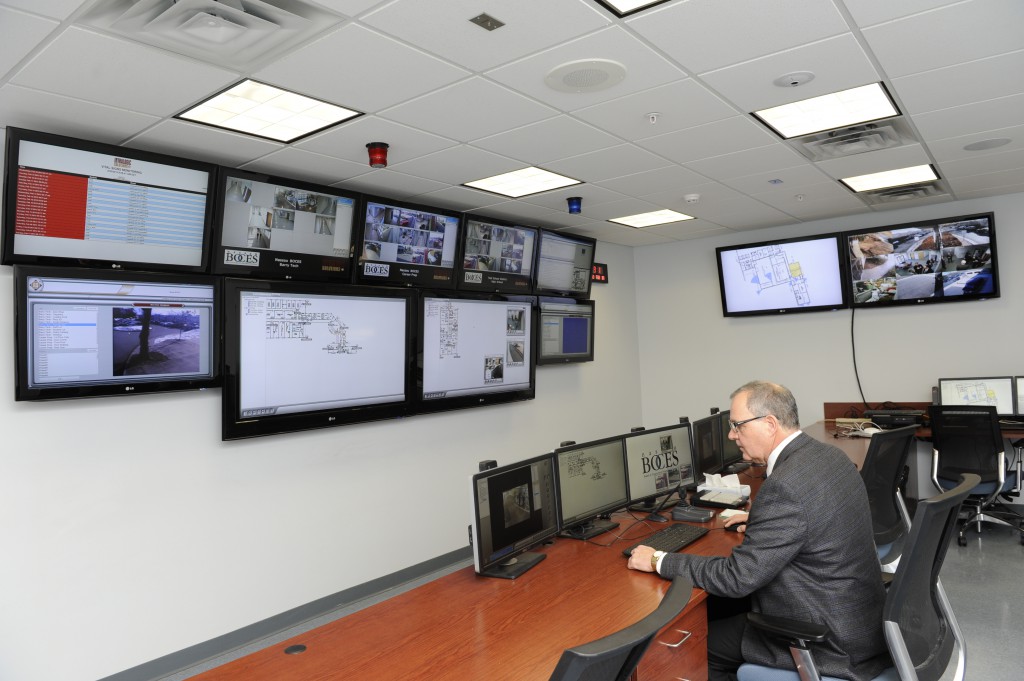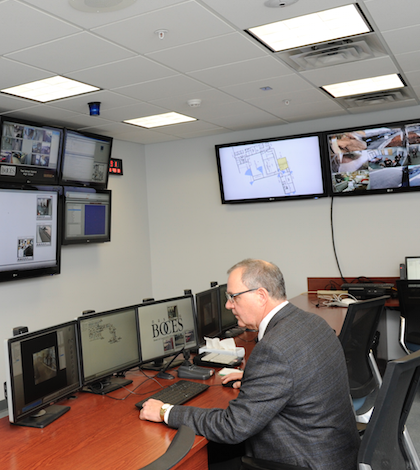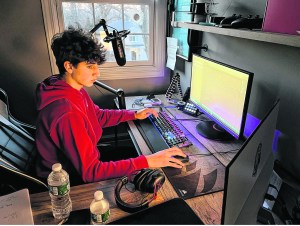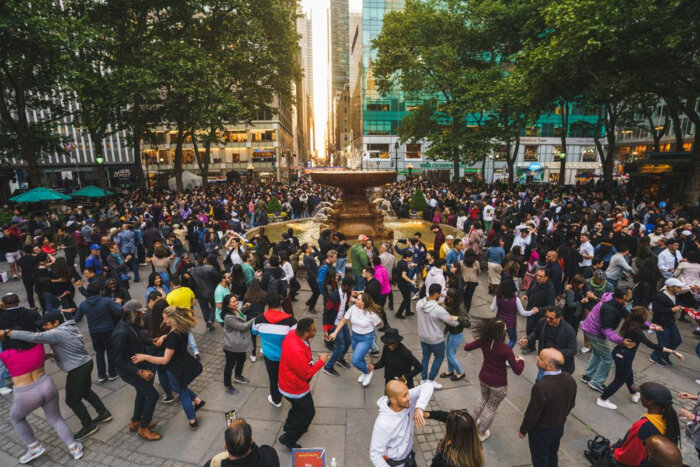
When Stuart Cameron, assistant chief of patrol for the Suffolk County Police Department, types “Newtown, Conn.” into Google, the search engine seemingly always follows up the town’s name with a suggested link that one year later still breaks hearts and prompts a wave of emotions—“Newtown Massacre.”
“That’s something we never want to see [in Suffolk County],” Cameron said by phone.
Indeed, Cameron never stops educating himself about past mass shootings such as Sandy Hook Elementary School, where 20 first-grade students and six adults were brutally slaughtered on Dec. 14, 2012. When the Connecticut State Attorney’s office released its 44-page report in November revealing never-disclosed-before details of the horrific slayings, Cameron immediately immersed himself in it, as he did with the 911 calls from that morning that were recently released on judge’s orders.
One new detail that sticks out, he said, is the speed in which the gunman, Adam Lanza, shot his way into the locked building in the early morning hours with a Bushmaster rifle, and preceded to shoot and kill the school’s principal and psychologist in the north hallway, injure two others, murder 20 children and two adults inside two first grade classrooms and finally end his own life—and the shooting rampage—with a single gunshot from a .10mm Glock inside classroom 10. Twenty-seven people, including Lanza, were dead before the first police officer entered the building.
The six minutes of terror inside Sandy Hook demonstrates that “speed is imperative more than it’s ever been,” Cameron said.
One year later, the Newtown shooting is still on the minds of educators, school officials, local authorities and elected officials across Long Island. The massacre has forced officials to institute new security policies at local schools and utilize new technology to create better synergy between schools and local police in the event that the unthinkable happens on LI.
Nassau County launched a taxpayer-funded Panic Alarm Program that will soon equip all schools in the county with five wireless panic alarms that connects them with Nassau police. In Suffolk, a number of schools are installing the the School Active Violence Emergency (SAVE) Hotline, which provides a direct phone line to a 911 supervisor, allowing police to pull up a map of the school and provide real-time intelligence to officers on the ground—all in an attempt to increase response time.
The impact of the tragedy was felt in other ways, with New York State becoming the first in the country to pass gun control legislation within just one month of the shooting. That law, the NY Safe Act, also includes a requirement that mental health specialists report to local officials patients that they believe may cause serious harm to themselves or others.
While the swift passage of gun control legislation sparked politically-charged debates about gun rights, there’s been little push back from residents when it comes to bolstering security inside schools.
A national Gallup poll released in August revealed that concerns over school safety hasn’t dissipated among parents of school-aged children since the shooting. According to the poll, 33 percent of K-12 parents feared for their oldest child’s safety at school—up from 25 percent the previous school year.
“It is unfortunate that we have to plan for events such as an active shooter, but if anything can be learned out of these horrific events it is that it is better to be prepared,” Nassau County Executive Ed Mangano said in a statement to the Press.
Nassau has hosted six Active Shooter seminars since Newtown. School administrators and faculty were invited by Nassau County police to learn about procedures the department has in place to address a possible active shooter scenario at a local school.
Suffolk has held similar seminars and also conducted a comprehensive tabletop exercise to test school security plans against an active shooter threat, the county said.
“You cannot put a price tag on a child’s life and I will continue to do everything within my power to safeguard our children and our residents,” Mangano said.
The Panic Alarm Program has yet be officially introduced in the county, but officials hope to do so soon once they work through some technological issues with the devices, according to Nassau BOCES District Superintendent Tom Rogers.
In the meantime, Nassau BOCES has added more of a security presence at all buildings and instituted a security and safety committee tasked with evaluating current procedures and making recommendations.
“Obviously we think a lot about Newtown, but we think a lot about things like vandalism,” and other security vulnerabilities, said Rogers.
Several Nassau BOCES buildings use an extensive camera and monitoring system with motion sensors that local authorities can access during an active shooter situation. BOCES offers this system, which was put in place before Sandy Hook, to school districts throughout the county. Currently, 10 schools have signed up for the camera system and another eight are finalizing contracts to do so.
Rogers said once police gain access to the camera system they can see the building’s floor plans and pick and choose which cameras to operate.
The cameras act as the authorities’ eyes in the building, which means “officers can enter the building more quickly,” Rogers said, which he hopes could save lives.
“This is a business where seconds count,” he said.
Districts have implemented their own procedures in the aftermath of Newtown, including hiring additional security, adding buzzers at front doors and conducting an overall assessment of a building’s entrances.
On Dec. 15, 2012, the day after the massacre, Legis. Sarah Anker (D-Mount Sinai) gathered her staff in her office where they brainstormed ways to improve school safety. Anker left that meeting with an idea to author legislation that would examine the implementation of a school emergency notification system, which resulted in Suffolk police creating the SAVE Hotline.
“It cuts the time,” Anker said of the program, which was unveiled for the first time in August. “And our thought is seconds can save lives.”
In total, 10 school districts—which includes 93 individual schools—have signed up for the program. There are 72 school districts in Suffolk.
Mount Sinai School District, which elected to take part in the pilot program for SAVE Hotline, is hoping to install two of the devices early next month.
The systems, which cost about $120 a pop, resemble fire alarm boxes but are yellow instead of red, and work as two-way phones once an administrator hits the button, according to district superintendent Enrico Crocett.
“One of the things that is most critical is response time,” he told the Press. “It is impossible to stop a man with assault weapons from entering any building in the country. The trick is to get the assistance of local authorities as soon as possible to minimize the damage this person can create.”
The hotline allows schools to bypass the traditional 911 system, which could be flooded with 911 calls during an emergency, and puts school officials in direct communication with a school supervisor, Cameron said.
A connection between the school and police can be made in just eight seconds, said Anker.
Suffolk police hopes future enhancements to the system will bring up a floor plan of the building on a large screen and allow them to access security camera footage inside the building.
The hotline is far more valuable than just speaking with someone on the ground through 911 because police can establish real-time intelligence as responding officers race to the scene.
“We want to know where in the building [the gunman] is? What does the person look like?” added Cameron, information they may not be able to get from a 911 caller, possibly a student or someone outside the building. “We realize any delays potentially equals lives lost,” he said of the speed with which shooters can sprays bullets into crowds.
Crocett, the Mount Sinai School District Superintendent, said the district has taken other precautions since Sandy Hook, adding a video intercom system on the outside of buildings and separating visitors in between two entries. Once inside, a visitors’ driver’s license is scanned.
“If there’s a warning, they get stopped,” Crocett said. “That is a security enhancement, it’s not going to stop a gunman.”
Local authorities lament that if a shooter wants to force his or her way into a building, there’s not much school security can do to stop the gun-toting intruder. It’s the response time that needs to improve.
“It’s definitely a high-priority focus,” Cameron said of school safety. “It’s challenging, its’ a big county and there’s a lot of schools in it. We can’t blink.”



























